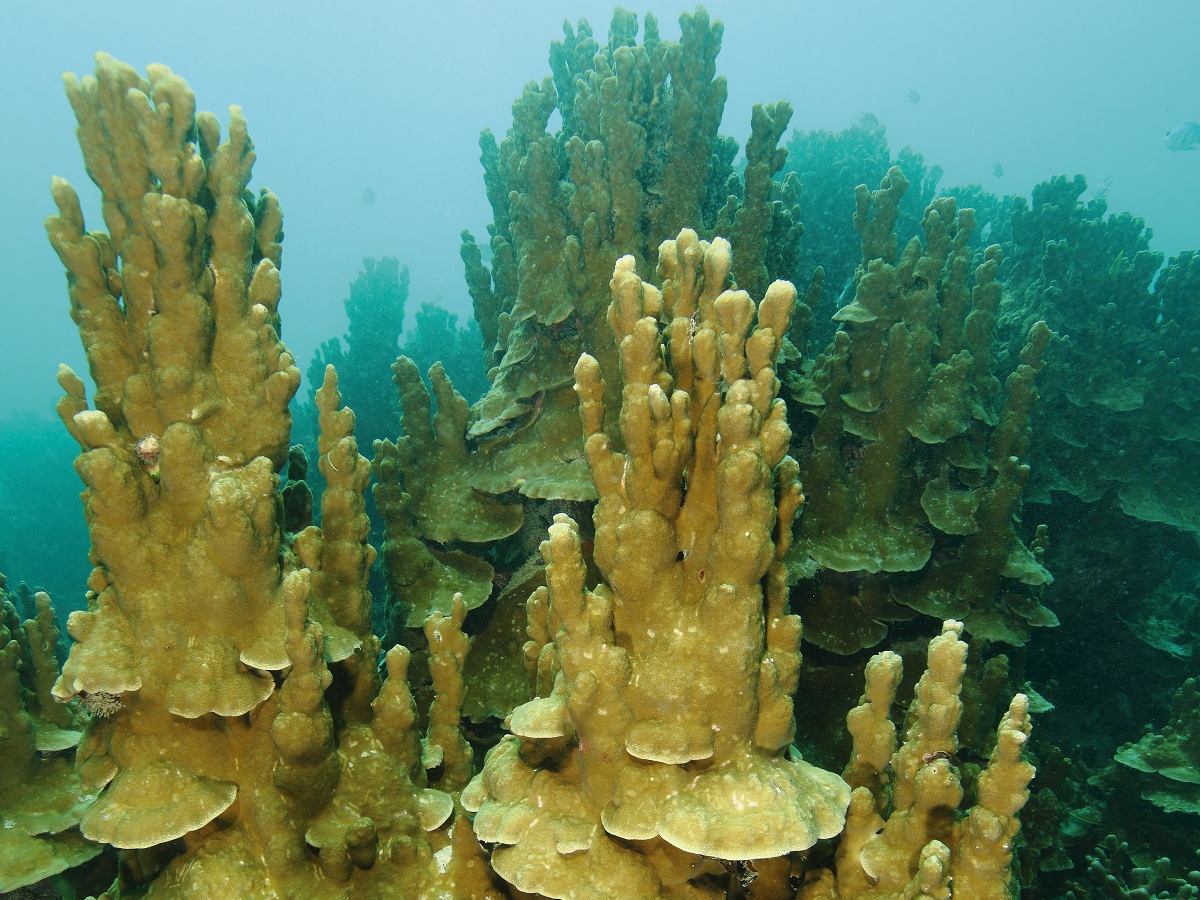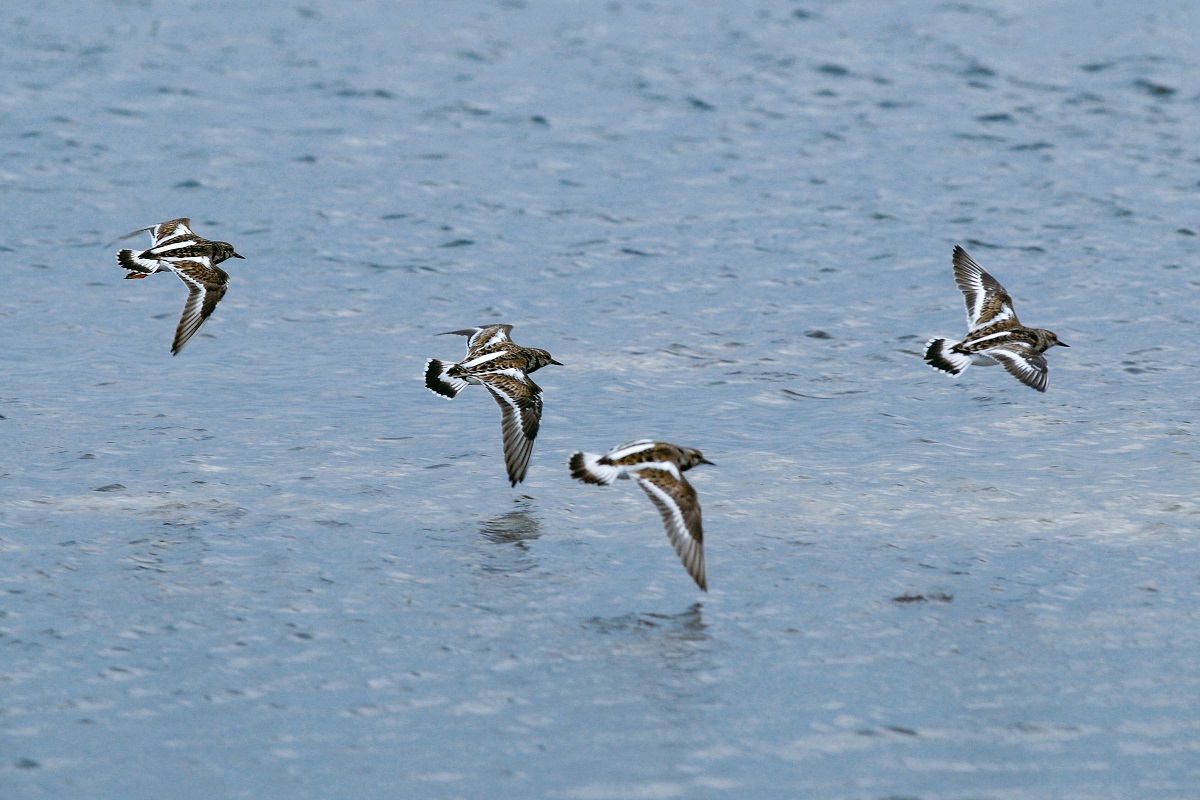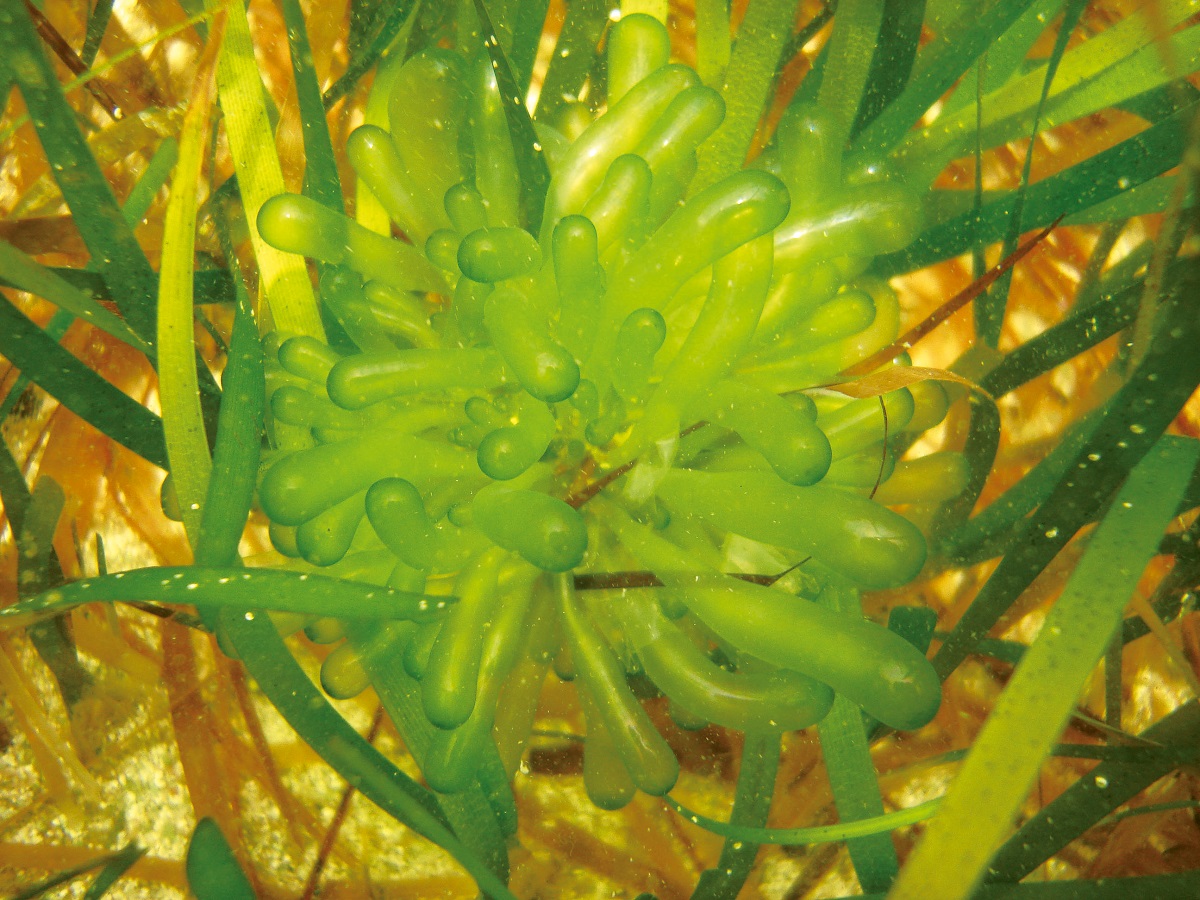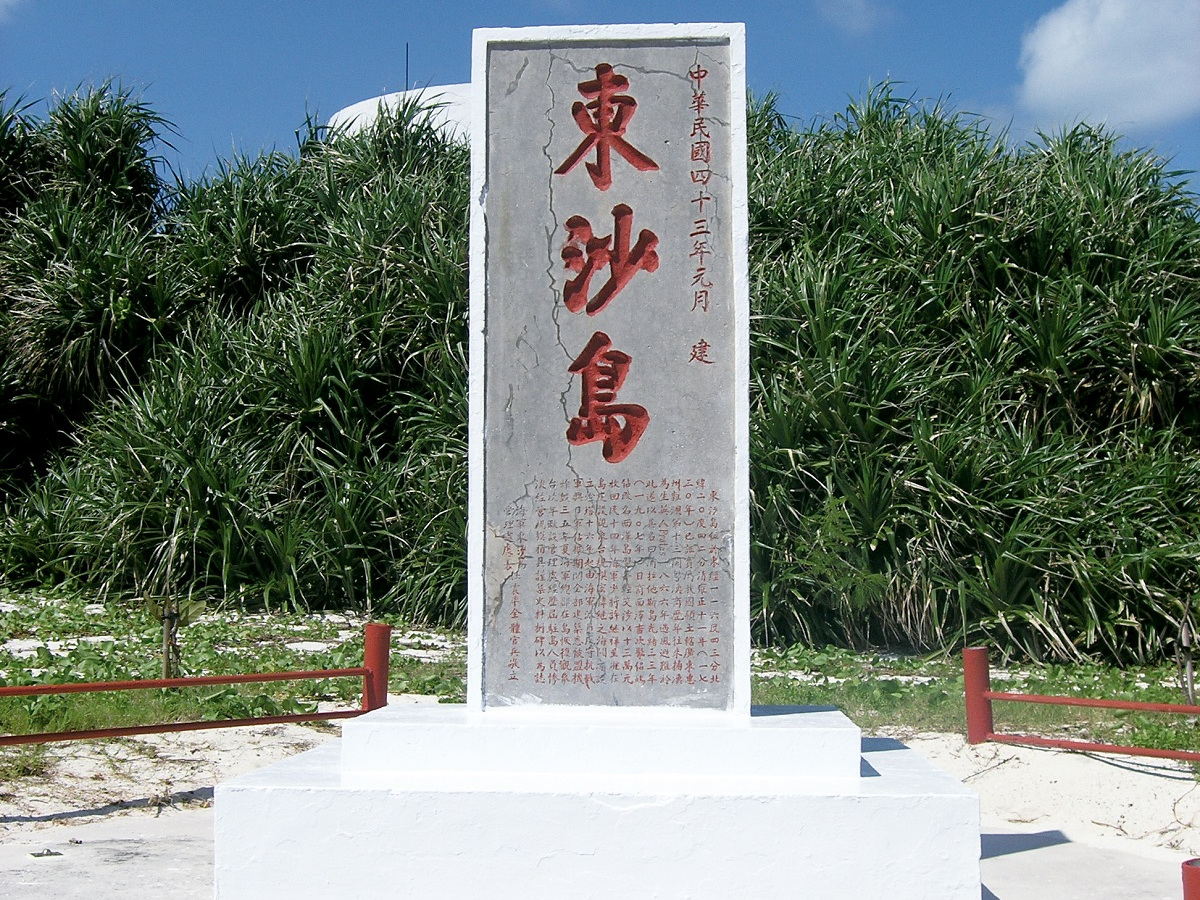Dongsha Atoll National Park is not only the seventh national park in Taiwan, but also our first marine national park. To protect the uniqueness of its atoll seascape, the invaluable coral reef and seagrass ecosystems which are teeming with life and the island congealed and formed by the accumulation of coral sand, the Ministry of Interior established the “Dongsha Atoll National Park” on January 17, 2007. The total area of the Dongsha Atoll National Park is 353,668 hectares, with Dongsha Atoll being the center, and a radius of 12 nautical miles.
The Ring of South China Sea
The fluctuations between ocean and land over tens of millions of years, has resulted in the growth and accumulation of reef corals, eventually forming the Dongsha Atoll, like a dazzling ring emerging from the vast blue waters. Due to its location in the South China Sea close to marine biodiversity hotspots, and its pristine ecological environment, the atoll harbors an extraordinary and bountiful marine ecosystem, and plays a very important role as a stepping-stone on dispersal of marine organisms in the South China Sea.
Rainforest of the Sea
Coral reef ecosystem is often called the “tropical rainforests of the sea”. The structural complexity of coral assemblages provides habitats for an astounding richness of life, resulting in a flourishing diversity of coral reef fishes, mollusks, and crustaceans. Lemon sharks that roam the tropical waters are frequent visitors to Dongsha Atoll. The occurrence of apex predators indicates that the marine ecosystem of Dongsha Atoll is rather healthy and balanced.
Corals
Coral is a term that includes both hard corals (scleractinians) and soft corals (alcyonaceans), and it is the former of the two that possess reef-building capacity. Living coral cover is high in Dongsha Atoll, which may well be over 80% on the outer rim of the atoll, thriving with a high diversity of both hard and soft coral. Due to the restricted water exchange between the lagoon and outer atoll, with living coral coverage ranging from 12% to 70%.

branching Alcyoniidae

reef coral

Melithaea ochracea Linnaeus
Fishes
690 fish species of 73 families have been recorded in the Dongsha waters, the most common fishes are the wrasses, gobies and damselfish. One of the most distinctive fishes is the Cheilinus fasciatus, also known as the “humphead wrasse of Dongsha”. Other distinctive fishes include Pomacanthus sexstriatus, Pentapodus caninus, Hipposcarus longiceps, Trimma naudei, Amblygobius nocturnus, Eviota prasites, and Choerodon anchorago etc.

Chaetodon kleinii Bloch

Chromis viridis

Negaprion acutidens
Crustaceans
Crabs are the dominant group of crustaceans along the shores of Dongsha Island. Horn-eyed ghost crab(Ocypode ceratophthalmus ) is the most common species on the sandy beaches, and one can often see them traversing the beach in huge numbers at an extremely fast speed. The numerous burrows on the beaches are where they live. Of the terrestrial crabs, Cardisoma carnifex are the most abundant, also larger in body size.

Uca tetragonon Herbst

Cardisoma carnifex

Cypraea tigris Linnaeus
Mollusks
Mollusks are widely distributed throughout the world. There are 382 known species currently categorized into 88 different families. Mollusks are highly diverse and they come in many different forms and colors in order to adapt to different environments. Most mollusks have a protective shell. However, shell-less mollusks such as Octopodidae Octopus squids and Sea Slug Forum are also commonly found in the sea. 150 species of mollusks can be found along the coast of Dongsha Island, among which 20 are deemed new species. Mollusks are extremely colorful and exhibit an endless variety of beautiful designs; making the marine world more lively and alluring.

Bispira sp.

Chromodoris elisabthina

Formia monilis
An Island of Coral Sand
The calcified remains of corals and shells accumulated for millennia, eventually congealed into present day Dongsha Island on the west part of the Dongsha Atoll. With no soil, no hills, no rivers, the island is the only portion of the atoll that remains above sea level. From an aerial view, the lush green of the island is decorated by a fringe of glittering white coral sand.
Flora
Dongsha Island marks the northern distribution boundaries for many tropical plant species, and its flora is similar to tropical coastal vegetation. Among the plant species found on Dongsha Island, some tropical species are not distributed in the mainland of Taiwan, such as Pisonia grandis R. Brown, Cordia subcordata, Triumfetta repens (Blume) Merrill & Rolfe, and Suriana maritima.

Cordia subcordata

Pisonia grandis R. Brown

Scaevola sericea

Triumfetta repens (Blume) Merrill & Rolf
Fauna
Located on the major migratory route for East Asian birds, the birds sighted in Dongsha are generally comprised of transient birds and winter visitors. The species of insects recorded include those from the Southeast Asia and Pacific region, displaying unexpectedly high species diversity, not found large mammals.

Arenaria interpres

Calidris alba

The only resident bird species Amaurornis phoenicurus

Cephonodes hylas

Euploea core sub sp. amymone
Sea turtles
The waters of Dongsha have long been both the feeding grounds and nesting grounds for green turtles and hawksbill turtles in the South China Sea region. As both species are endangered globally, basic survey on sea turtle ecology and related conservation efforts are one of the target tasks of Dongsha Atoll National Park. Currently only green turtles(Chelonia mydas ) and hawksbills(Eretmochelys imbricata) have occurred in Dongsha. Nonetheless, a conservation center for rehabilitation of sea turtles and other animals have been set up on Dongsha Island.

Eretmochelys imbricata
A Glint of Verdure
Seagrass and algae proliferate in the shallow waters surrounding Dongsha Atoll and Dongsha Island, where the water clarity and light penetration are high. As one of the most important primary producers of the ecosystem, seagrass and algae are the main food resource for many marine animals. The range of habitats provided by seagrass beds have become the shelter for many juvenile organisms, acting as perfect nursery grounds.
Algae
The macroalgae communities distributed in the waters of Dongsha encompass a highly abundant and diversified algal resource. Similar to those found in northern Philippines, all are tropical algae species. At least 176 species of 37 families macroalgae have been documented, and there will be an increase in the abundance and diversity of algae.

Padina australis Hauck

Caulerpa sertularioides

Caulerpa racemosa var
Seagrass
The seagrass bed extends for more than 1200 hectares around Dongsha Island, which covers an area that is 20 times larger than the total area of all seagrass beds around the mainland of Taiwan added together. Seven species of seagrass are found in Dongsha, including four of which are not seen anywhere else in Taiwan, illustrating itself the significance and uniqueness of the seagrass community thriving in Dongsha. These four species are Cymodocea rotundata, Cymodocea serrulata, Syringodium isoetifolium, and Thalassodendron ciliatum.

Thalassia hemprichii

School of small fish rambling through the seagrass

Syringodium isoetifolium
Traces of Time
The South China Sea has been a substantial fishing ground since ancient times. Dongsha Atoll, which is in the northern part of the South China Sea, is located right on a major maritime trade route. However, the submerged reefs and dangerous shoals in the waters of Dongsha, have caused many shipwrecks when the sea was rough and stormy, leaving a prodigious legacy of cultural heritage underwater. During World War II, the Japanese took over Dongsha. The highly abundant guano phosphate on the island was extracted extensively, and many military facilities were built as their base of operations for advancing southward, resulting in the destruction of the ecosystem.
Marine Sustainability
The South China Sea has been a substantial fishing ground since ancient times. Dongsha Atoll, which is in the northern part of the South China Sea, is located right on a major maritime trade route. However, the submerged reefs and dangerous shoals in the waters of Dongsha, have caused many shipwrecks when the sea was rough and stormy, leaving a prodigious legacy of cultural heritage underwater. During World War II, the Japanese took over Dongsha, many military facilities were built as their base of operations for advancing southward, resulting in the destruction of the ecosystem.
Nowadays, our Coast Guard Administration is in charge of homeland defense and sea patrol in Dongsha, while all subjects relevant to sustainable management of Dongsha Atoll are in the hands of Marine National Park Headquarters, National Park Service, Ministry of the Interior. Pertaining to the four concepts of eco-friendly, energy conservation, waste reduction and healthy living, Dongsha Administration Station and the Wildlife Conservation Center were set up by refurnishing existent infrastructure and facilities on the island. The ultimate goal is to establish an international research center on Dongsha Island, committed to marine conservation, ecological research and environmental education.

Dongsha Island Landmark“South China Sea Defense”

Dongsha Island stone stele

The Monument “Pearl of the South China Sea”

Da Wang Temple, the only religious center on island

Dongsha Service Station

Dongsha Fishermen Service Station was built in 1987

Benthic observation

Bird survey

Wildlife Conservation Center
Transportation on the Island
Access to Dongsha Island is mainly by air transport between Siaogang, Kaohsiung and Dongsha Island. The government contract flights are flown by civilian aircraft regularly, chartered to accommodate personnel of the coast guard and Dongsha Administration Station. Means of transport on Dongsha Island is mainly by bicycles and buses.

Access to Dongsha Island is mainly by air transport

Kaohsiung City Government provide transport services on the island

Bike is important transport for Dongsha Island

